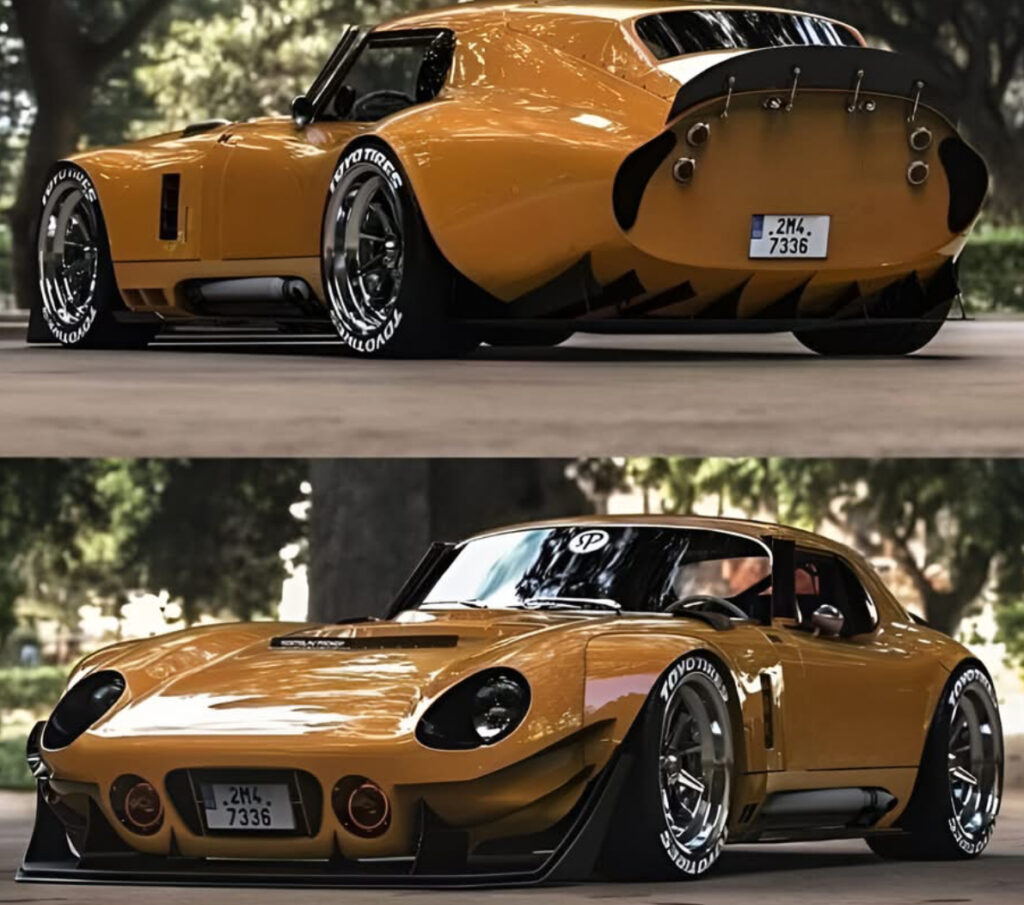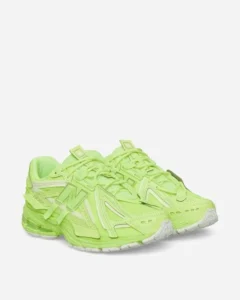
The Shelby Daytona Coupe is one of the most legendary vehicles in American racing history. Designed by Peter Brock under the guidance of Carroll Shelby, this aerodynamic masterpiece dominated endurance racing in the 1960s, taking on European giants like Ferrari and proving that American engineering could compete on the world stage. With its sleek, teardrop-shaped body and formidable powerplant, the Daytona Coupe became a symbol of innovation and performance.
However, as automotive design evolves, so too does the way we interpret classic machines. In the spirit of innovation and personalization, what if the Shelby Daytona Coupe were to be reimagined for the future? How would modern materials, cutting-edge aerodynamics, and contemporary styling influence its design? This concept explores a futuristic reimagination of the Shelby Daytona Coupe, blending classic styling cues with modern technology, creating a striking contrast between heritage and future-forward thinking.
Honoring the Legacy: A Brief History of the Shelby Daytona Coupe
Before diving into a modern reimagining, it’s essential to understand why the original Daytona Coupe is so revered. In the early 1960s, Carroll Shelby sought to defeat Ferrari in the GT class of endurance racing. The Shelby Cobra, while powerful, lacked the aerodynamics necessary to compete at high speeds on European circuits like Le Mans. Enter the Daytona Coupe, a closed-body version of the Cobra designed by Brock.
Built around a lightweight tube-frame chassis and powered by a 289-cubic-inch Ford V8, the Daytona was a force to be reckoned with. In 1965, it secured the FIA GT World Championship, marking the first time an American manufacturer had won such an accolade. Only six original Daytonas were ever built, making them among the rarest and most valuable American race cars.
This legacy serves as the foundation for a futuristic reimagining—one that respects the past while embracing the possibilities of the future.
Exterior: Aerodynamics Meets Modern Aesthetics
A futuristic Daytona Coupe would maintain the sleek, aerodynamic silhouette of the original but with refined, contemporary design elements. The smooth curves of the original would be accentuated by sharper creases and more aggressive body lines, enhancing airflow efficiency while creating a bolder visual presence.
•Carbon Fiber Construction: Unlike the aluminum-bodied original, the modern iteration would feature full carbon fiber body panels, reducing weight while increasing structural rigidity.
•Active Aerodynamics: Modern technology allows for active aero elements, such as an adjustable rear wing, deployable front splitters, and air curtains that optimize downforce and drag reduction at high speeds.
•LED Light Signature: Instead of traditional round headlights, a futuristic Shelby Daytona would feature slim, aggressive LED strips, seamlessly integrated into the bodywork for a modern aesthetic.
Powertrain: The Heart of the Future
The original Daytona Coupe was powered by a Ford V8, delivering raw, unfiltered power. A futuristic version could take multiple approaches while staying true to its performance heritage:
A. Hybrid V8 Powertrain
A possible configuration would be a hybridized twin-turbo V8, delivering over 1,000 horsepower. This setup would feature:
•A lightweight, twin-turbocharged Ford 5.0L V8, supplemented by electric motors on the front wheels for all-wheel-drive capabilities.
•A KERS (Kinetic Energy Recovery System), similar to Formula 1 technology, capturing lost energy during braking to improve acceleration.
B. Fully Electric Option
For a truly future-forward vision, an all-electric Shelby Daytona could push boundaries with:
•A quad-motor setup, delivering instant torque and precise torque vectoring.
•Solid-state batteries, providing longer range and faster charging compared to current lithium-ion technology.
•A simulated V8 soundtrack, using advanced speaker technology to replicate the visceral roar of the original Shelby powerplant.
Either option would maintain the Daytona’s performance-oriented DNA, ensuring it remains a formidable track weapon.
Interior: Merging Retro Charm with Futuristic Tech
Inside, the reimagined Shelby Daytona Coupe would strike a balance between vintage racing minimalism and high-tech luxury.
•Driver-Centric Cockpit: The interior would feature a carbon-fiber monocoque structure, creating a lightweight and rigid environment focused on performance.
•Digital Instrument Cluster: A futuristic holographic heads-up display (HUD) would replace traditional dials, providing real-time telemetry, lap times, and navigation.
•AI-Assisted Driving Modes: The car could feature an AI-powered track coach, offering real-time feedback on racing lines, braking points, and acceleration patterns.
Unlike the spartan interiors of 1960s race cars, this futuristic Daytona would feature premium materials such as Alcantara, forged carbon fiber, and titanium accents, ensuring a luxurious yet functional atmosphere.
Chassis & Suspension: Precision Handling for the Future
A reimagined Daytona Coupe would not only be about raw power but also about handling precision. Cutting-edge engineering would allow for:
•Active Suspension: An adaptive magnetorheological suspension system would adjust damping in real-time, providing optimal ride quality on both track and street.
•All-Wheel Steering: To enhance agility, a futuristic Daytona could integrate rear-wheel steering, improving cornering ability at high speeds while maintaining stability.
•Advanced Braking System: Utilizing regenerative carbon-ceramic brakes, the system would offer superior stopping power while recovering lost energy.
Personalization & Customization: A New Era of Automotive Art
One of the most exciting aspects of a futuristic Shelby Daytona Coupe is the potential for personalization. Enthusiasts could configure their cars with:
•Bespoke Aero Packages: Owners could choose between track-focused or street-optimized aerodynamic kits.
•Custom Paint & Livery Options: A digital configurator could allow for an endless array of liveries, paying homage to historic race cars or creating entirely new color schemes.
•Modular Performance Tuning: Advanced software would enable owners to tweak settings such as power output, traction control, and aerodynamics, tailoring the car to their driving preferences.
The Future of Automotive Icons
The Shelby Daytona Coupe was a car ahead of its time in the 1960s, and a futuristic reimagining should carry the same pioneering spirit. With modern aerodynamics, advanced powertrains, AI-enhanced driving, and cutting-edge materials, a future Daytona Coupe would be a masterpiece of both engineering and design.
While purists might argue that classics should remain untouched, innovation and personalization are at the heart of automotive evolution. Just as Carroll Shelby and his team once pushed boundaries to create the original Daytona Coupe, today’s designers and engineers have the opportunity to redefine what an American racing icon can be.
The question remains—if Carroll Shelby were alive today, how would he reimagine the Daytona Coupe? Given his relentless pursuit of speed, performance, and innovation, it’s safe to say that a futuristic Daytona would be nothing short of extraordinary.
Would you drive a futuristic Shelby Daytona Coupe? Let’s keep the conversation going—what features would you want to see in a next-gen interpretation of this iconic machine?
No comments yet.








